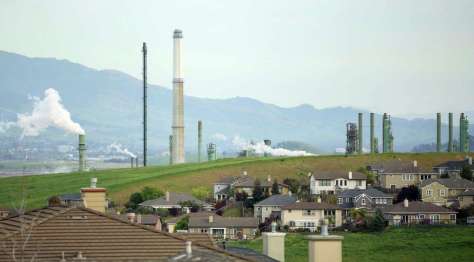[Note from BenIndy Contributor Kathy Kerridge: Don’t we have a right to a safe and healthy environment? It’s time to put it in our Constitution.]

LA Times, by the Times Editorial Board, April 24, 2024
California may be a leader in the fight against climate change, but the state is years, even decades, behind other states when it comes to granting environmental rights to its citizens.
While a handful of other state constitutions, including those of New York and Pennsylvania, declare the people’s rights to clean air, water and a healthy environment, California’s does not.
That could change as soon as November. Under a proposal moving through the Legislature, voters would decide whether to add one sentence to the state constitution’s Declaration of Rights: “The people shall have a right to clean air and water and a healthy environment.”
The proposed green amendment could be seen as a well-meaning but symbolic change in a state that, despite tough environmental rules, struggles to address deep environmental problems like air pollution, contaminated drinking water and the worsening impacts of climate change.
But there’s a reason that powerful business interests have come out in opposition. Enshrining environmental rights in California’s constitution would give citizens a new tool to hold the government accountable for failing to act in the interest of environmental health, protection and justice. That could, in turn, force the state to crack down on polluters.
It should be obvious that we need more tools to address the climate crisis. And in California, of all places, citizens should have the chance to weigh in on whether a healthy environment is a right on par with life, liberty, safety, happiness and privacy, which are all spelled out in the constitution. Lawmakers should advance this proposal to let the voters decide.
To be put on the ballot the amendment must be approved by two-thirds of lawmakers in both the state Assembly and Senate. It must win the support of a simple majority of voters to be added to the constitution.
States like Montana, which declares “the right to a clean and healthful environment,” added this kind of language to their constitutions more than 50 years ago in response to the burgeoning environmental movement. After the advent of Earth Day, Pennsylvania in 1971 amended its constitution to add the people’s right to “clean air, pure water, and to the preservation of the natural, scenic, historic and esthetic values of the environment.”
In recent years, some of those rarely invoked amendments have seen new life as bases to challenge government decisions over oil and gas permitting and the cleanup of contaminated sites and other environmental hazards. There’s now a nationwide movement to get green amendments onto more state constitutions. In 2021 70% of New York voters passed an amendment adding the right to “clean air and water, and a healthful environment” to its state constitution’s Bill of Rights, language that is nearly identical to the California proposal.
But state Legislatures have also been a chokepoint for these proposals. In some states, such as New Jersey, green amendments with bipartisan support have languished for years because key lawmakers have prevented them from being being considered.
Business interests in California are lining up in opposition to putting the proposed green amendment on the ballot. Brady Van Engelen, a policy advocate for the California Chamber of Commerce, told lawmakers during a legislative hearing earlier this month that it was a “job killer” that could spur lawsuits and be weaponized by “wealthy white NIMBYs” to block development.
Assemblymember Isaac Bryan (D-Los Angeles) who introduced the green amendment legislation, dismissed the Chamber’s opposition as “ridiculous.” He said that lawmakers opted for simple, direct language that is more limited than other states’ to make it clear the amendment is not intended as litigation bait, but rather to establish a clear obligation that the state make decisions in a way that upholds the environmental values it espouses. A green amendment would not establish any new right for individuals to sue businesses for environmental violations.
But just as in New York, Pennsylvania and Montana, a California green amendment could be used to hold state officials accountable for their decisions, from legislation and permitting to the enforcement of existing environmental laws.
Californians should have the chance to not only send a message about how much they value a healthy environment, but to assert that something as fundamental to life as clean air and clean water isn’t just an aspiration or an ideal, but a right.






You must be logged in to post a comment.